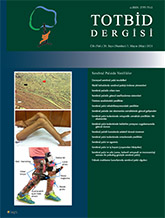
There have been particularly important developments in early diagnosis, prevention and treatment of cerebral palsy, which is the most common cause of disability in childhood. There are high-quality studies showing that neonatal hypothermia practices, antenatal corticosteroid treatment, prophylactic caffeine (methylxanthine) administration before intubation in infants born preterm and who will undergo mechanical ventilation prevents the development of cerebral palsy in infants with perinatal asphyxia and neonatal encephalopathy findings. Epidemiological studies show that the incidence of non-ambulatory cases with severe motor impairment has decreased. These results are achieved with comprehensive obstetric and neonatal intensive care practices. With these developments in the prevention and intensive care process, early detection of cerebral palsy risk, the introduction of rehabilitation strategies and early intervention approaches is a very important step in the treatment of risky babies. Cerebral palsy rehabilitation has become an area where randomized controlled trials have begun to be done a lot. This has contributed to the understanding of the effectiveness of the methods applied since the past and to the prominence of the concept of plasticity and the ICF (The International Classification of Functioning, Disability and Health) based approach and the change of perspective in rehabilitation. Rehabilitation strategies have started to be planned as patient-specific, activity-based and target-oriented therapy combinations, from passive treatment approaches. In this review, the most recent evidence levels regarding conventionally applied methods will be discussed along with the newly introduced popular rehabilitation methods.